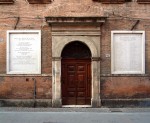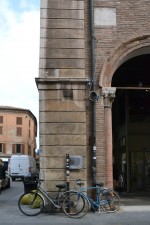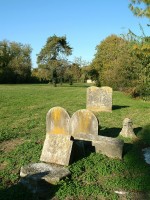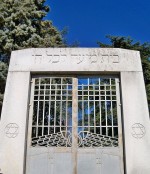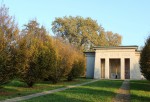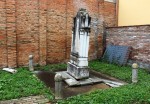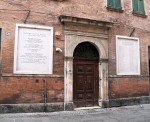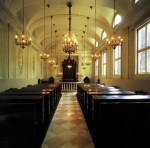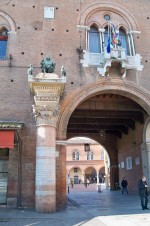The Jewish City
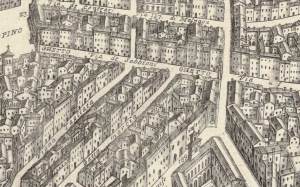
Plan and elevation of the city of Ferrara, first published by Andrea Bolzoni,... in M D CC XLVII, and now reduced according to its state in the present year M D CCLXXXII by Giambattista Galli,... Detail. Paris, Bibliothèque Nationale de France, Département Cartes et plans, GE C-1802. Gallica.fr
Places of Jewish culture characterize the spaces of Ferrara starting from the area of the ancient ghetto, where Jews were imprisoned since 1627. This was located between Via Sabbioni (now Via Mazzini), Via San Romano and Via Gattamarcia (now Via Vittoria). The area retains most of the original buildings, while only a few traces remain of the ghetto gates. In the area there was the Spanish Synagogue, a place of worship for Jews from the Iberian Peninsula who arrived in Ferrara at the invitation of Duke Ercole I d'Este.
The Jewish Community is based in Via Mazzini 95. On the façade there are two plaques in memory of the Jews from Ferrara who were deported to the concentration camps. The building is home to three synagogues: the German School, the Fanese School and the Italian School. The complex has been closed for renovations since 2012.
In Ferrara there are two Jewish cemeteries. The smallest was destined for the first 21 Spanish families who arrived in 1492. The second is located in Via delle Vigne and is one of the oldest Italian Jewish cemeteries still in use. It is accessed through an Art Nouveau portal built in 1912.
The itinerary ends in front of the column that supports the statue of Borso d'Este. It hides a "secret": a part of the column is made with the tombstones of the cemetery of Via delle Vigne, demolished at the behest of the Inquisition in the eighteenth century. A story that Ferrara has decided not to forget by placing a plaque on the will of the city to rebuild relations with the Jewish culture of Ferrara.
Bibliography
Related places
Compiling entity
- Istituto di Storia contemporanea di Ferrara
Author
- Sharon Reichel
- Paola Boccalatte

